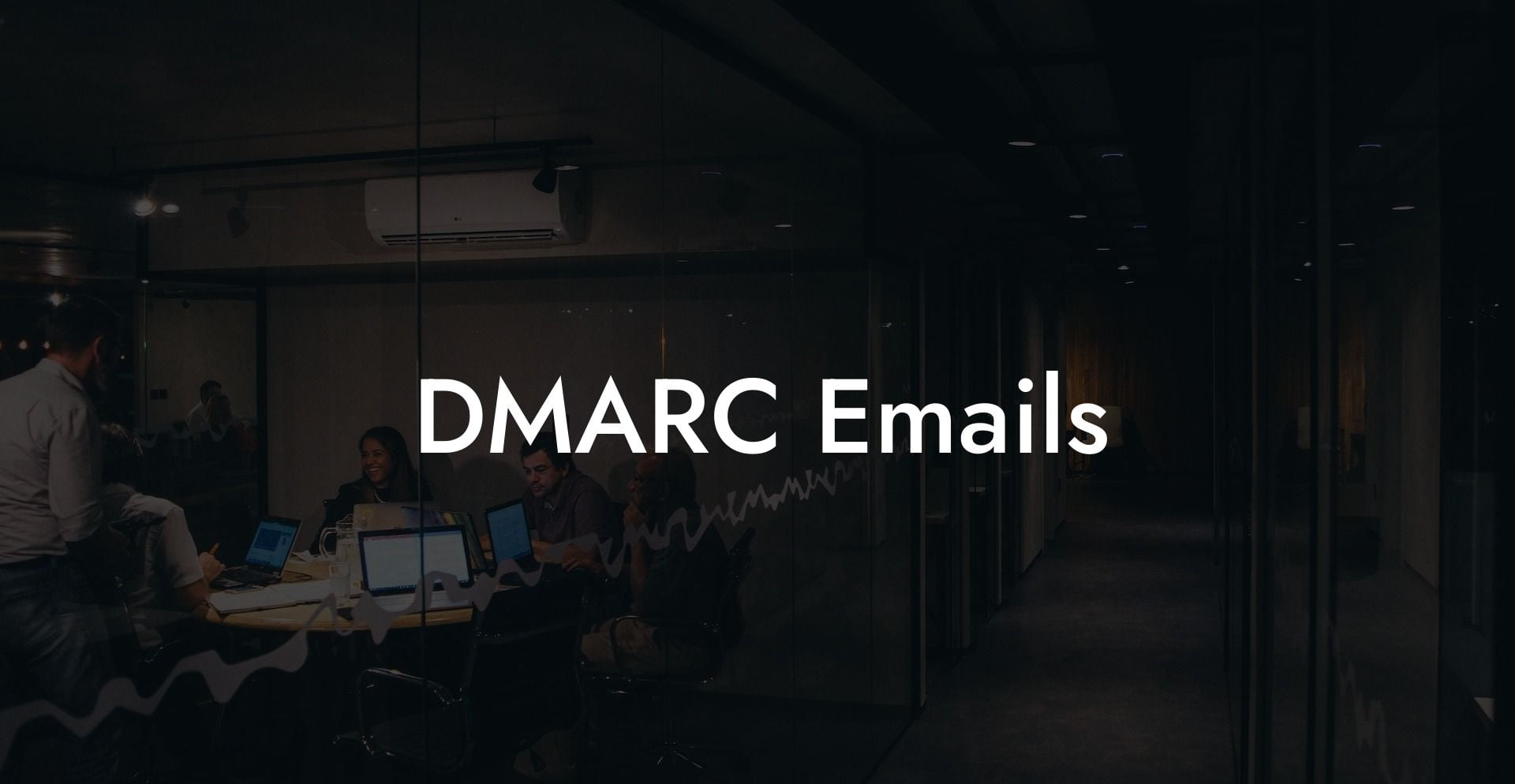In today's digital world, email remains one of the primary communication methods for individuals, businesses, and organizations alike. However, the prevalence of emails also makes them a prime target for scammers and cybercriminals. One of the best ways to protect yourself and your organization is by implementing DMARC, a powerful email authentication system. In this comprehensive guide, we will explore the role of DMARC in preventing email scams and phishing attacks, how it works, and how to set it up for your domain. So, buckle up, and let's dive into the world of DMARC emails!
DMARC Emails Table of Contents
What is DMARC?
Domain-based Message Authentication, Reporting, and Conformance (DMARC) is an email authentication protocol that allows domain owners to protect their emails from being intercepted, spoofed, or used in phishing attacks. DMARC works by combining two existing authentication protocols—Sender Policy Framework (SPF) and DomainKeys Identified Mail (DKIM)—to validate the authenticity of the sender's email address and help email receivers verify the sender's identity.
Why is DMARC Important?
- Preventing Email Spoofing: Cybercriminals often use email spoofing to impersonate well-known brands or individuals to solicit sensitive information or trick people into clicking malicious links. DMARC helps prevent these attacks by verifying the sender's authenticity.
- Increasing Email Deliverability: Emails that pass DMARC authentication are more likely to end up in the recipient's inbox, ensuring better deliverability and protecting your/domain's reputation.
- Visibility and Reporting: DMARC provides valuable reports for domain owners, giving them insights into email threats, sending patterns, and potential authentication issues.
- Protecting your Domain's Reputation: Implementing DMARC helps your domain maintain a positive reputation with email providers, reducing the chances of your emails being flagged as spam.
How Does DMARC Work?
Protect Your Data Today With a Secure Password Manager. Our Top Password Managers:
DMARC works by using the policies defined by the domain owner to either accept, quarantine, or reject unauthenticated emails. These policies are published in the domain's DNS records and include details about the authorized SPF and DKIM identifiers for the domain. When an email is sent, the receiving server checks the sender's identity using SPF and DKIM authentication, and then validates the results against the domain's published DMARC policies. Actions are taken based on the DMARC policy set by the domain owner—either allowing the email, sending it to the user's spam folder, or rejecting it entirely.
DMARC Policy Levels
- None: The domain owner only monitors the sending pattern and collects reports but does not enforce any actions for unauthenticated emails.
- Quarantine: Unauthenticated emails are sent to the recipient's spam folder, reducing the risk of harmful content reaching the main inbox.
- Reject: The receiving server rejects any unauthenticated emails, providing robust protection against email scams.
Setting Up DMARC for Your Domain
- Create DMARC Record: A DMARC record is a TXT record published in your domain's DNS. It typically includes the protocol version ('_dmarc'), the policy level ('p'), and an email address for receiving aggregate reports ('rua').
- Verify SPF and DKIM: Ensure that your domain has valid SPF and DKIM records in place, as DMARC relies on them for email authentication.
- Monitor and Adjust: Start with a 'none' policy level to monitor your sending patterns and collect reports before defining a stricter policy. Gradually adjust your policy level as needed to ensure proper email authentication without jeopardizing deliverability.
DMARC Emails Example:
ACME Corporation wants to implement DMARC to improve its email security. The company first creates valid SPF and DKIM records for its domain, then proceeds to create a DMARC record as follows:
v=DMARC1; p=none; rua=mailto:dmarc@acme.com;
This record indicates the DMARC version, sets the policy to 'none' for monitoring purposes, and provides an email address to receive aggregate reports. ACME Corporation monitors its email activity and gradually adjusts its policy level to 'quarantine' and finally 'reject' when they are confident about their authentication mechanisms.
Maintaining a high level of email security is crucial for any organization or individual. By understanding and implementing DMARC, you can not only protect yourself and your domain from email-based threats but also maintain a positive reputation with email providers and users. Now that you have a comprehensive understanding of DMARC emails, share this guide with friends, colleagues, and other businesses to help them enhance their email security. Also, stay tuned to Voice Phishing for more informative guides on cybersecurity and email safety.
Protect Your Data Today With a Secure Password Manager. Our Top Password Managers:















